Thermaltake Toughpower Grand RGB 750W PSU Review
RGB LED lighting is the new hotness, and a lot of power supplies are incorporating it. Thermaltake's Toughpower Grand RGB with 750W of maximum power boasts RGB lighting, surprisingly good performance, and modular cabling.
Why you can trust Tom's Hardware
Transient Response Tests
Advanced Transient Response Tests
For details on our transient response testing, please click here.
Ιn these tests, we monitor the TPG-0750F-R's response in several scenarios. First, a transient load (10A at +12V, 5A at 5V, 5A at 3.3V, and 0.5A at 5VSB) is applied for 200ms as the PSU works at 20 percent load. In the second scenario, it's hit by the same transient load while operating at 50 percent load.
In the next sets of tests, we increase the transient load on the major rails with a new configuration: 15A at +12V, 6A at 5V, 6A at 3.3V, and 0.5A at 5VSB. We also increase the load-changing repetition rate from 5 Hz (200ms) to 50 Hz (20ms). Again, this runs with the PSU operating at 20 and 50 percent load.
The last tests are even tougher. Although we keep the same loads, the load-changing repetition rate rises to 1 KHz (1ms).
In all of the tests, we use an oscilloscope to measure the voltage drops caused by the transient load. The voltages should remain within the ATX specification's regulation limits.
These tests are crucial because they simulate the transient loads a PSU is likely to handle (such as booting a RAID array or an instant 100 percent load of CPU/GPUs). We call these "Advanced Transient Response Tests," and they are designed to be very tough to master, especially for a PSU with a capacity of less than 500W.
Advanced Transient Response at 20 Percent – 200ms
| Voltage | Before | After | Change | Pass/Fail |
|---|---|---|---|---|
| 12V | 12.201V | 12.098V | 0.84% | Pass |
| 5V | 5.079V | 4.986V | 1.83% | Pass |
| 3.3V | 3.339V | 3.158V | 5.42% | Pass |
| 5VSB | 5.046V | 4.988V | 1.15% | Pass |
Advanced Transient Response at 20 Percent – 20ms
| Voltage | Before | After | Change | Pass/Fail |
|---|---|---|---|---|
| 12V | 12.202V | 12.071V | 1.07% | Pass |
| 5V | 5.080V | 4.946V | 2.64% | Pass |
| 3.3V | 3.340V | 3.130V | 6.29% | Fail |
| 5VSB | 5.048V | 4.998V | 0.99% | Pass |
Advanced Transient Response at 20 Percent – 1ms
| Voltage | Before | After | Change | Pass/Fail |
|---|---|---|---|---|
| 12V | 12.203V | 12.073V | 1.07% | Pass |
| 5V | 5.081V | 4.965V | 2.28% | Pass |
| 3.3V | 3.340V | 3.109V | 6.92% | Fail |
| 5VSB | 5.048V | 4.988V | 1.19% | Pass |
Advanced Transient Response at 50 Percent – 200ms
| Voltage | Before | After | Change | Pass/Fail |
|---|---|---|---|---|
| 12V | 12.140V | 12.039V | 0.83% | Pass |
| 5V | 5.059V | 4.953V | 2.10% | Pass |
| 3.3V | 3.312V | 3.163V | 4.50% | Pass |
| 5VSB | 5.012V | 4.968V | 0.88% | Pass |
Advanced Transient Response at 50 Percent – 20ms
| Voltage | Before | After | Change | Pass/Fail |
|---|---|---|---|---|
| 12V | 12.141V | 12.016V | 1.03% | Pass |
| 5V | 5.059V | 4.924V | 2.67% | Pass |
| 3.3V | 3.312V | 3.084V | 6.88% | Fail |
| 5VSB | 5.013V | 4.945V | 1.36% | Pass |
Advanced Transient Response at 50 Percent – 1ms
| Voltage | Before | After | Change | Pass/Fail |
|---|---|---|---|---|
| 12V | 12.142V | 11.996V | 1.20% | Pass |
| 5V | 5.059V | 4.934V | 2.47% | Pass |
| 3.3V | 3.312V | 3.115V | 5.95% | Fail |
| 5VSB | 5.013V | 4.957V | 1.12% | Pass |
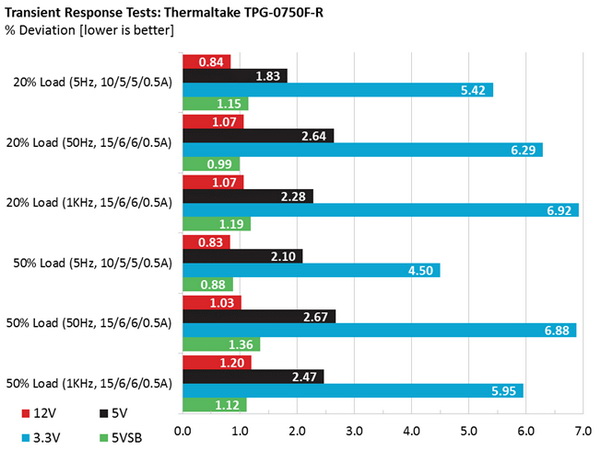
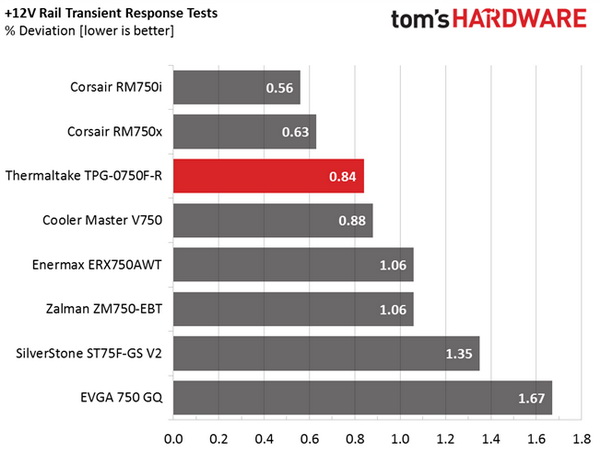


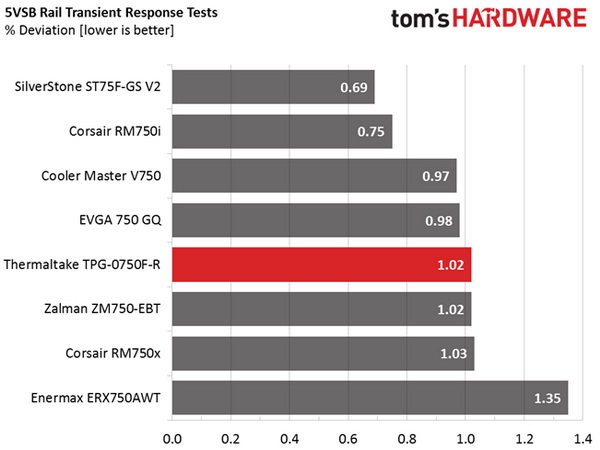
The +12V rail registers low deviations in each test. The next best-performing rail is 5VSB. The 5V rail follows, while the 3.3V rail fails in four tests. Sirfa should improve the VRM that handles 3.3V.
Get Tom's Hardware's best news and in-depth reviews, straight to your inbox.
Here are the oscilloscope screenshots we took during Advanced Transient Response Testing:
Transient Response At 20 Percent Load – 200ms

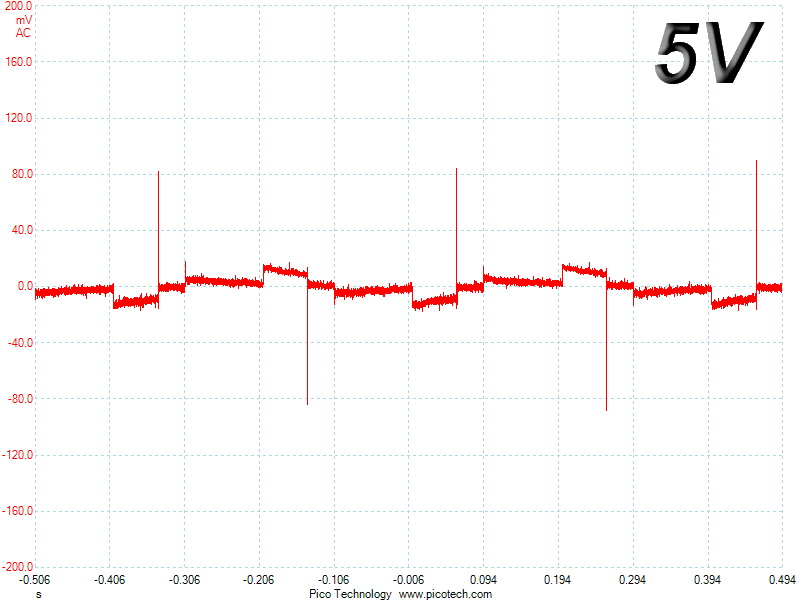

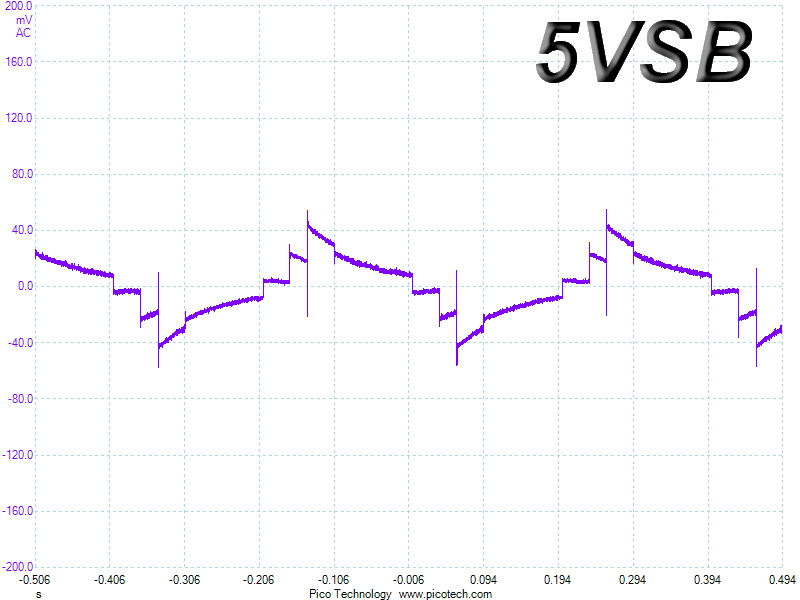
Transient Response At 20 Percent Load – 20ms
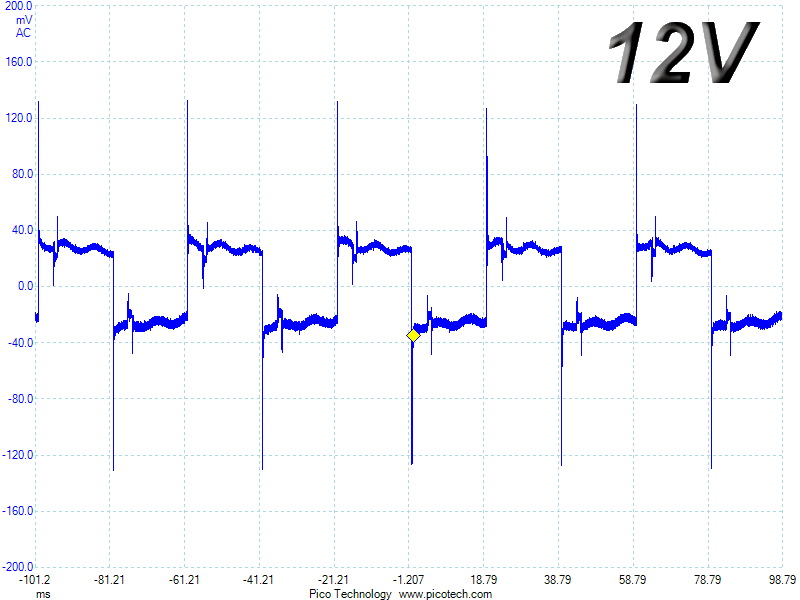
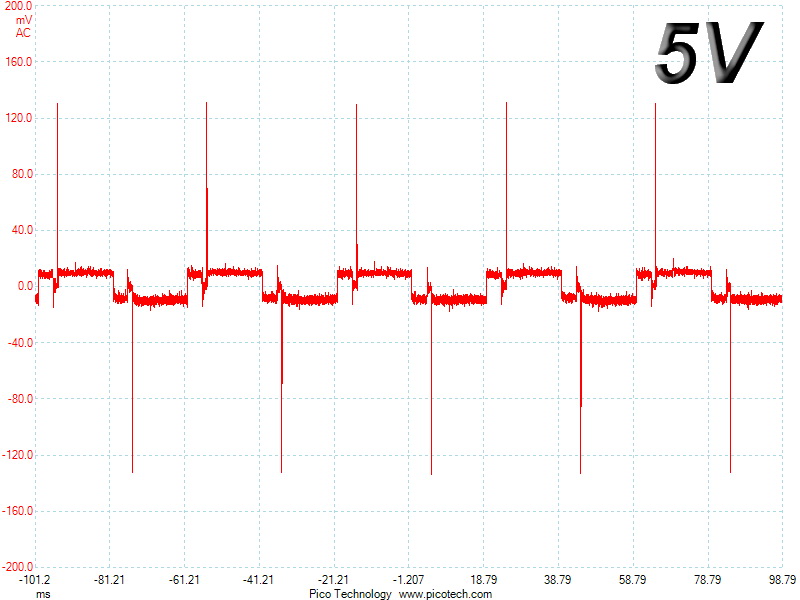
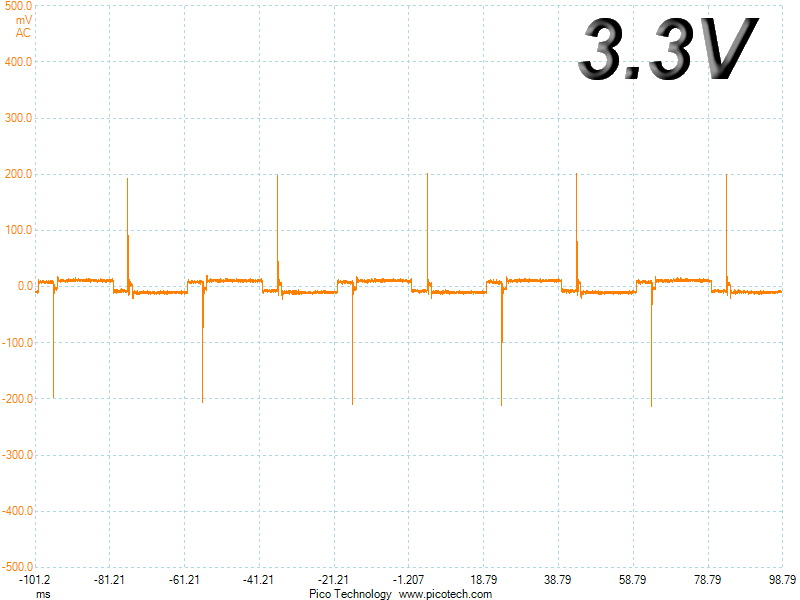

Transient Response At 20 Percent Load – 1ms
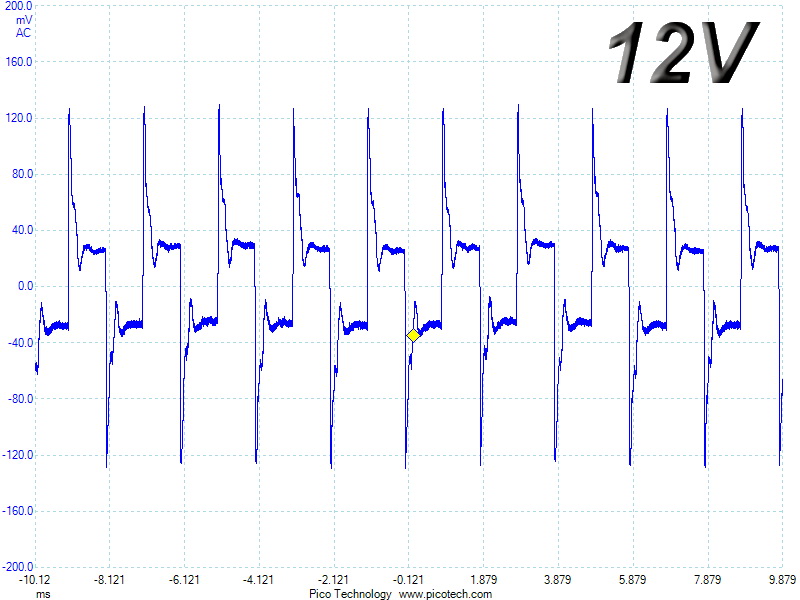
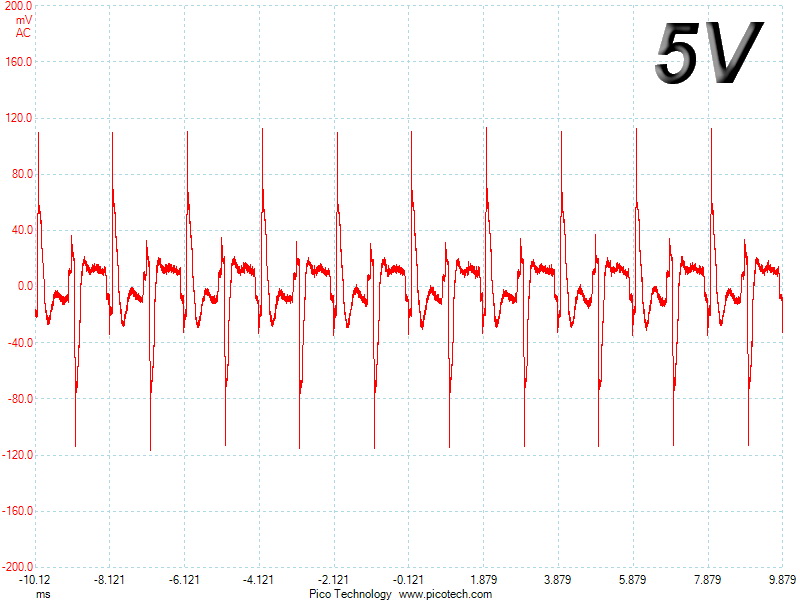

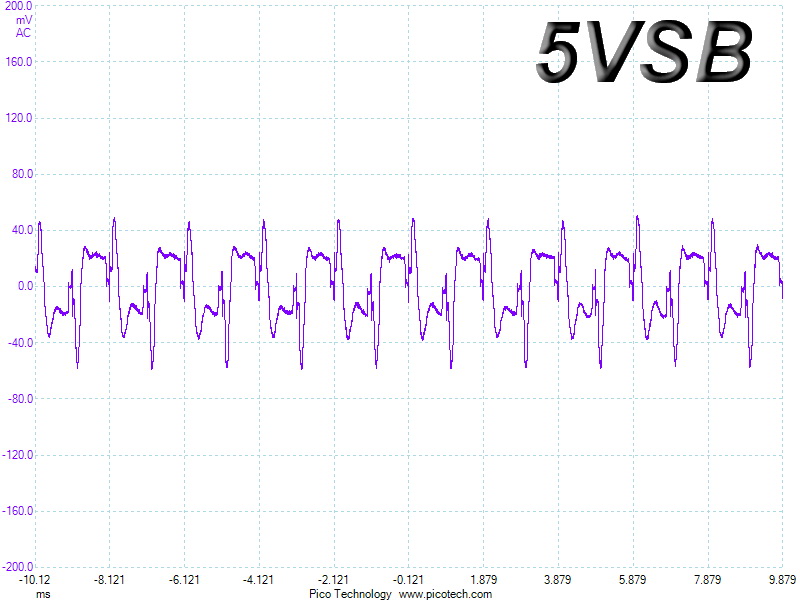
Transient Response At 50 Percent Load – 200ms
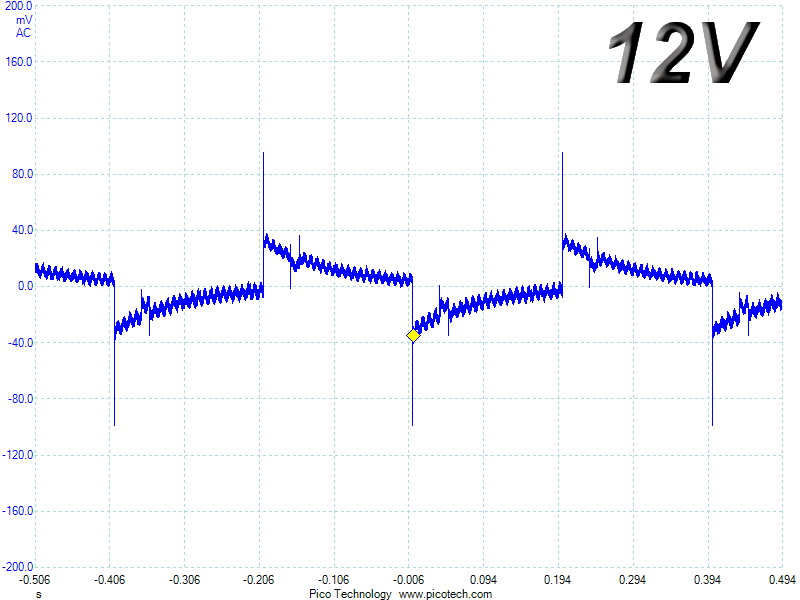
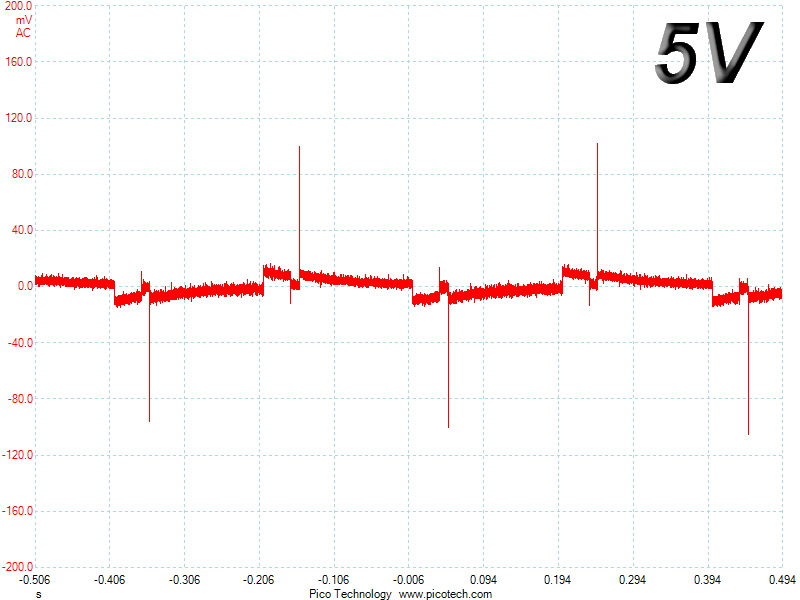
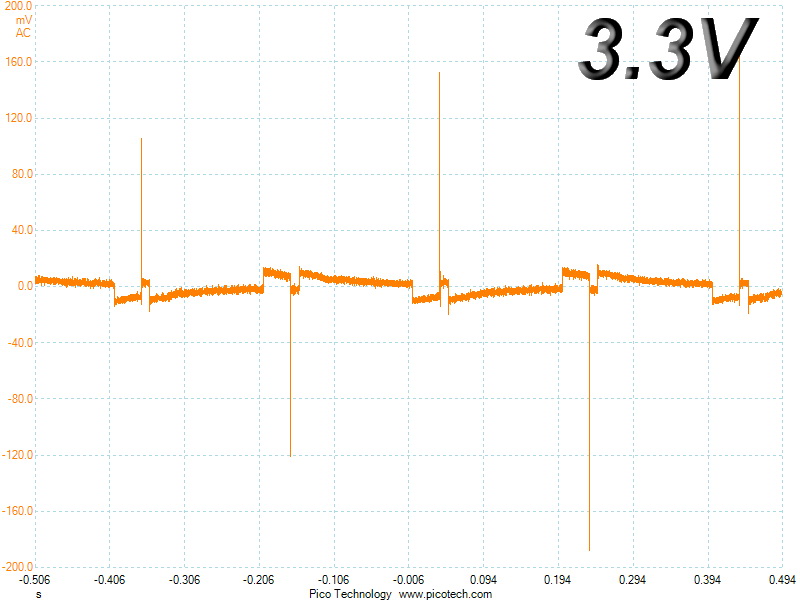

Transient Response At 50 Percent Load – 20ms
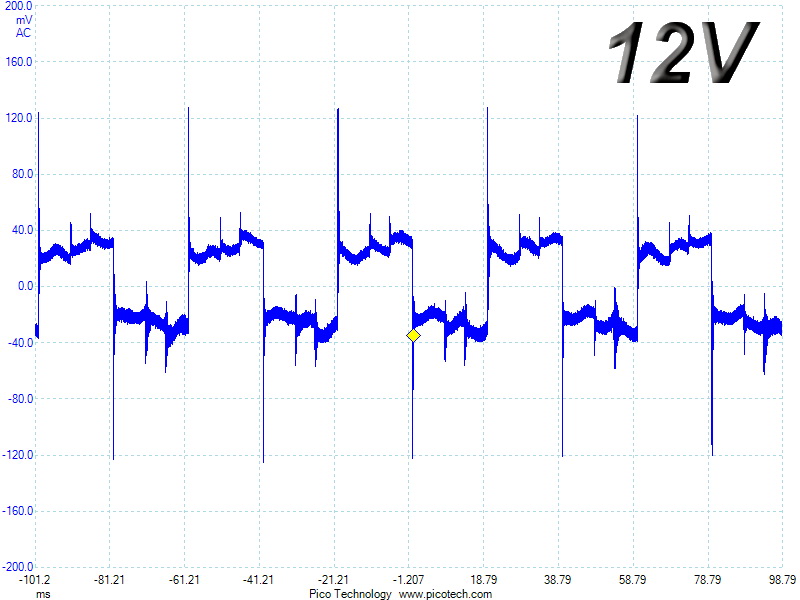

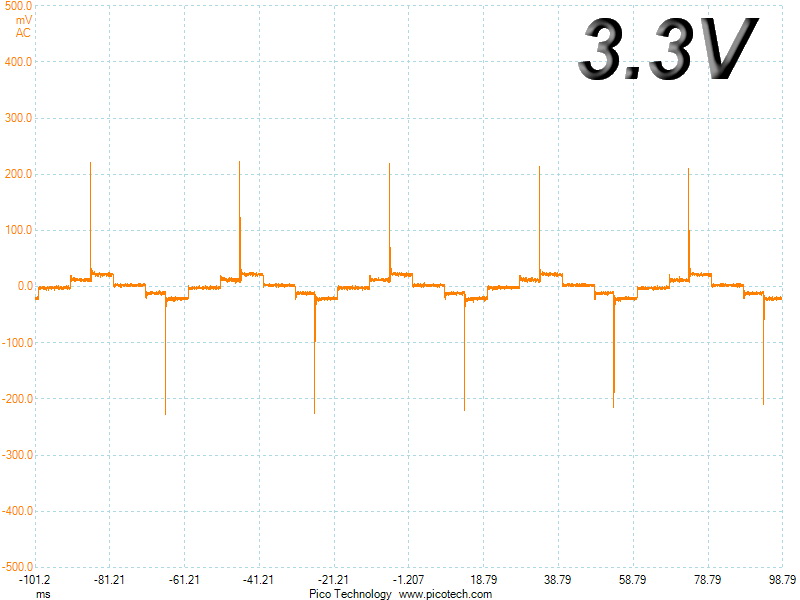
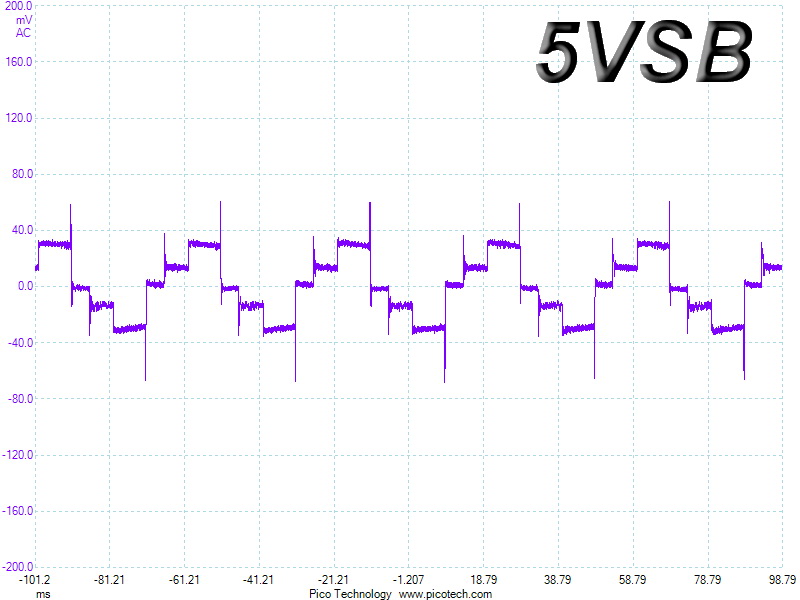
Transient Response At 50 Percent Load – 1ms
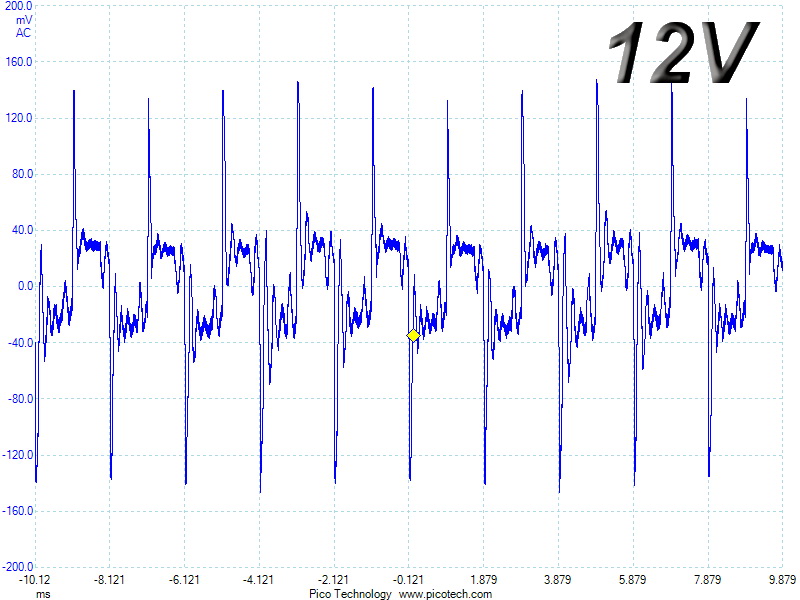
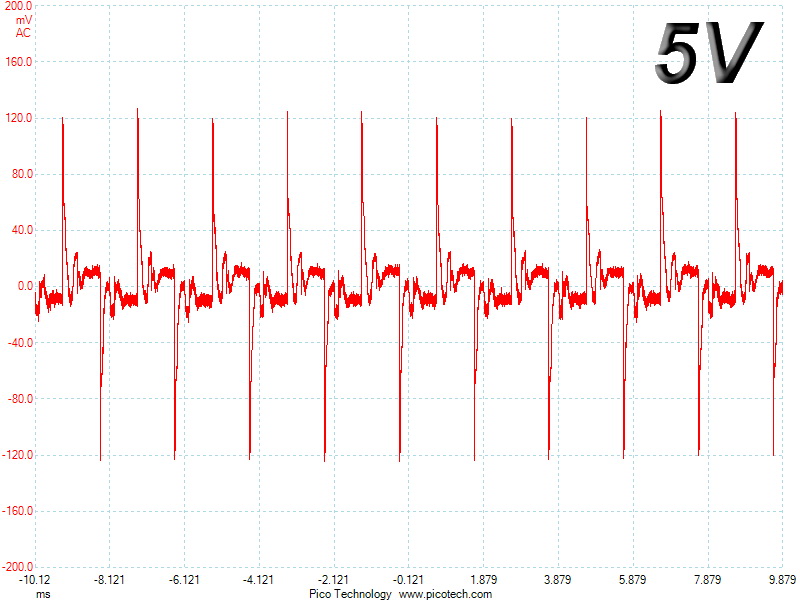
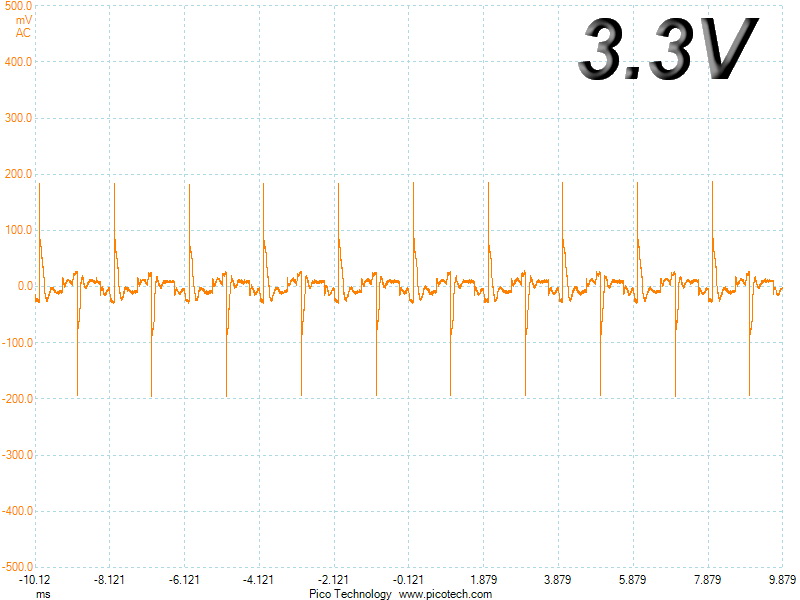

Turn-On Transient Tests
In the next set of tests, we measured the PSU's response in simpler transient load scenarios—during its power-on phase.
For the first measurement, we turned off the TPG-0750F-R, dialed in the maximum current its 5VSB rail could output, and switched the PSU back on. In the second test, we dialed the maximum load the +12V could handle and started the 750W supply while it was in standby mode. In the last test, while the PSU was completely switched off, we dialed the maximum load the +12V rail could handle before switching it back on from the loader and restoring power. The ATX specification states that recorded spikes on all rails should not exceed 10 percent of their nominal values (+10 percent for 12V is 13.2V, and 5.5 V for 5V).
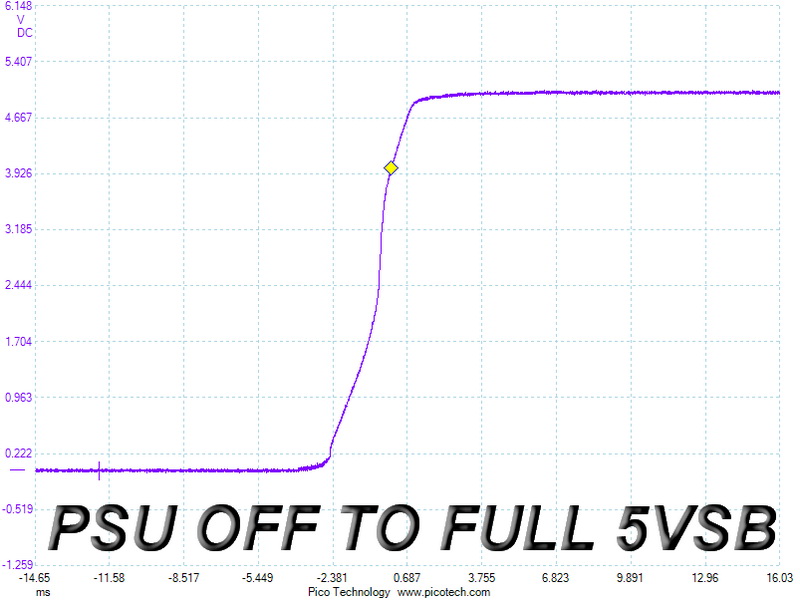
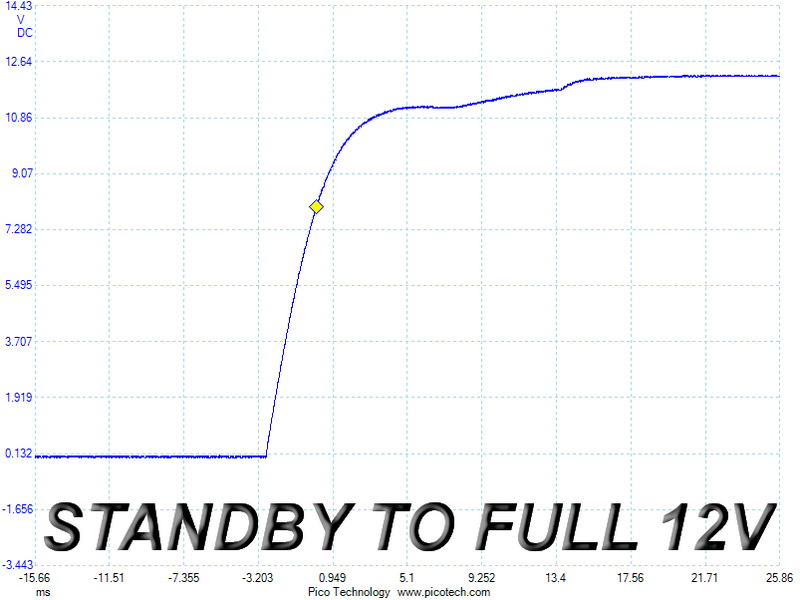
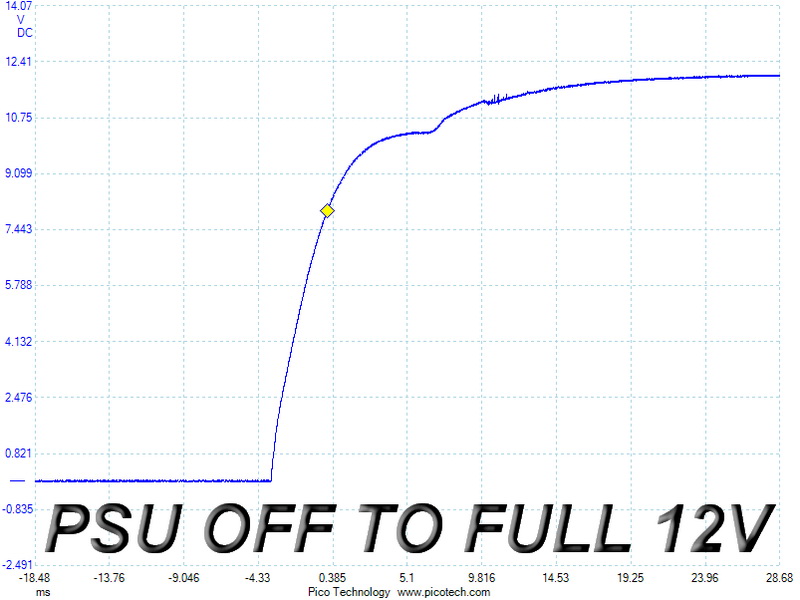
We observe good performance. But because we're extra picky, we'd like to see a smoother waveform in the third test.
Current page: Transient Response Tests
Prev Page Cross-Load Tests And Infrared Images Next Page Ripple Measurements
Aris Mpitziopoulos is a contributing editor at Tom's Hardware, covering PSUs.
-
shrapnel_indie Has anyone tested this claim of a cooler PC with the PSU fan facing up into the case instead of down and drawing air from outside?Reply
Edit: I see with at least this unit, it was found to be so, What about other units? -
Phillip Wager I have my computer case in a dusty area of my house and on the floor. i flipped my psu fan to face inside the case because i was sick of having to clean the dust filter every week or so. I'm paranoid about psu dust death. I have PLENTY of case fans(5) so i'm not worried about the psu overheating in this configuration.Reply -
Malik 722 but mounting power supply fan side up won't suck in hot air from the chassis and increase the power supply temperature.Reply -
Virtual_Singularity Reply19328496 said:I want it, for my Asus
Cool
Na, you really don't, you can do better methinks. -
blackmagnum "It's common knowledge that hot air rises, so if we want to improve airflow inside a chassis, we have to help move hot air up and out with fans installed on the top or back. We'll have to revisit this topic in a story about PSU orientation and its effect on case cooling."Reply
-I'll be looking forward to the article. -
SeoulFood I just won this PSU at a LAN this past weekend. I would use it, but I won a Silverstone 850w at the last LAN. Craigslist here we come.Reply